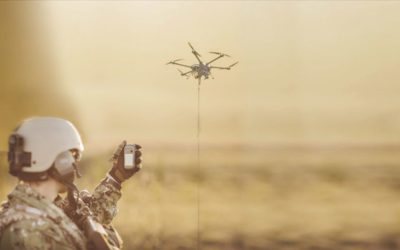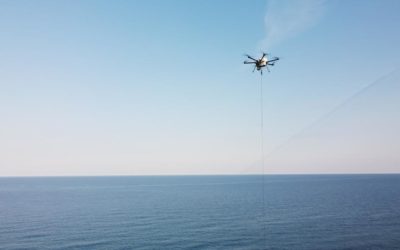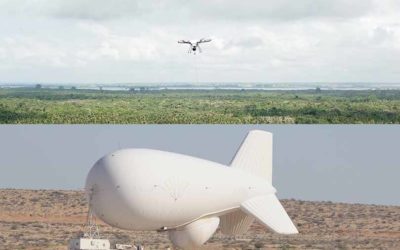Defense drone: towards the Soldier 3.0

Jean-Charles Kine
6 minutes
Defense drones have become essential tools for modern security and defense operations. Around the world, military forces, public security services, humanitarian organizations, and intelligence agencies are constantly being deployed.
The global landscape is becoming increasingly complex, with daily media reports highlighting climate disasters, terrorist attacks, violent protests, or large-scale operations.
To address these challenges, industries are quickly creating new technologies. This effort is led by government intelligence, law enforcement, and defense agencies. We are entering the “Soldier 2.0” era.
In the defense sector, drone systems are crucial tools. They provide better situational awareness and support for operations.
New technologies to provide tactical advantage
Autonomous and unmanned technology is always improving. Artificial Intelligence (AI) can do tasks much faster and on a larger scale than humans. This race to be the fastest, highest, strongest and most enduring continues, diversifies and is not about to stop.
Soldier 2.0 no longer goes into military operations without an accompanying technological arsenal. From the soles of his combat boots to the satellites he connects with, he uses gear, such as defense drone, focused on his survival and mission success.
In this eco-system, the connected 2.0 infantryman has many sensors. These sensors provide real-time information to the command structure. This goal has been driven by the aim to reduce friendly casualties to as close to zero as possible over the last few decades.
Because of their ease of integration, military drones are a natural choice in this whole stack of technological capability. Survivable, agile, and with a wide range of sensors, they already provide valuable awareness for mission command. Modern combat is no longer conceivable without a video feed projected onto screens and scrutinized in real time, or subsequently, by an army of analysts. This situational awareness, provided at minimal risk to human life, helps give military commanders tactical superiority through actionable intelligence.
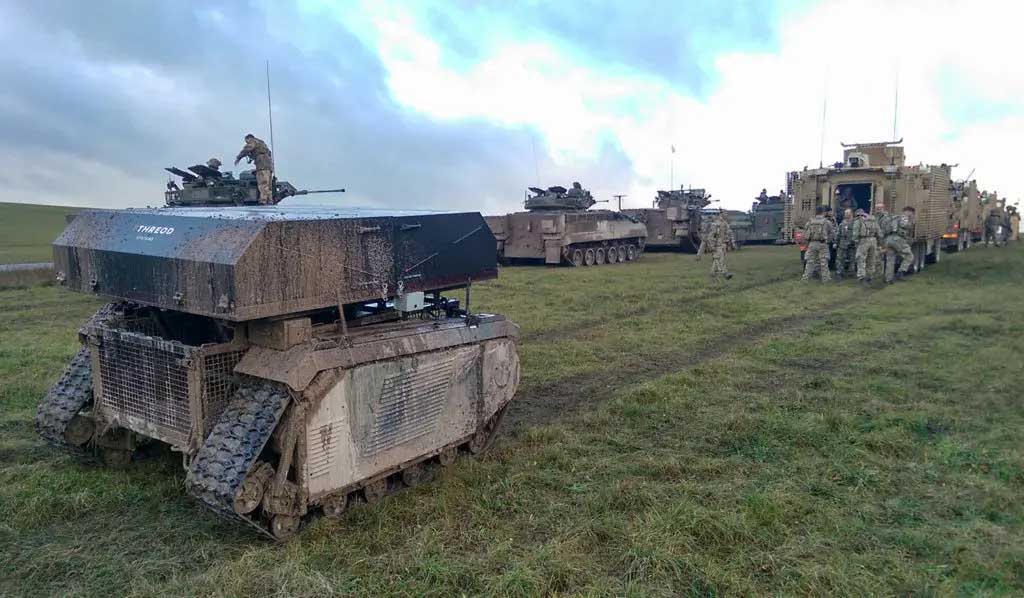
Artificial intelligence, automation, and advanced persistence
The upgrade from soldier 2.0 to soldier 3.0 will be accompanied by the advent and presence of robots in theatres of operations.
The role of automation to face dangers
Whether they are small or not, these autonomous devices will play a direct role in combat. They will be important for future warfare. The intrinsic characteristics of these future protagonists are endurance, persistence, as well as a certain form of insensitivity to threat, fear and doubt. Exoskeletons, autonomous armored vehicles, and insect-sized defense drone are now part of the military’s order of battle.
The transformation of operations with artificial intelligence
Artificial Intelligence is becoming more common and is linked to effective algorithms. This helps today’s armies move from old methods to a future that resembles the best science fiction stories.
The endurance of intelligent equipment is well proven. Each industrial sector has been using this type of technology for many years and on a large scale. From macro to micro to nano, companies are constantly looking to use these readily available tools.
In the defense industry, AI technologies such as unmanned aircrafts, predictive maintenance systems, and intelligent surveillance platforms are transforming operations.
- Autonomous drones, powered by AI, can execute reconnaissance missions, gather real-time intelligence, and operate in hazardous areas without putting human lives at risk.
- Predictive maintenance systems use AI to analyze equipment data, allowing armies to anticipate and prevent mechanical failures before they happen, thus increasing operational readiness.
- Intelligence surveillance and reconnaissance platforms, equipped with AI-based image recognition, can rapidly identify potential threats, enabling faster decision-making on the battlefield.
These technologies help armies enhance efficiency, reduce risks, and stay ahead in complex and rapidly changing environments.
Persistence, a precious asset
Persistence is already proven. As long as there is enough energy, the robot will complete its programmed mission. One can also note that increased machine usage often leads to greater reliability and fewer failures.
Aeronautics and the world of defense drone benefit from this last precious asset. An unmanned aerial system or helicopter that flies daily has a lower MTTR and MTBF. Its failure rate decreases, while maintainability and machine availability improve.

Defense Drone: Overcoming endurance limits
Defense manufacturers have become interested in these innovative technologies. However, the future military drones market is of little interest to major groups. This niche market currently belongs to the small and medium defense drone companies, or sales to the armed forces are in full swing.
Tethered drones: the key asset of persistence and secured communications
Elistair is one of these companies and a key actor in the UAV sector in France. A pioneer and precursor in the field of tethered drones for defense applications, Elistair develops tethered stations et ISR drones to overcome the endurance challenge.
Most commercial multirotor drones use Lithium Polymer batteries. They can only fly for 20 to 40 minutes at a time. Also, the data connections between the drone and the ground station may not be secure because they are sent over Radio Frequency.
In terms of employability, it would be interesting to count the positions and heights of interventions by multirotor type drones. It would be surprising to note that operators have difficulty deploying their multicopters a few hundred meters from their position. The majority prefer to leave this type of mission to fixed wing assets.
Multicopters are therefore mostly used as overwatch above the unit and are intended to provide information about what is happening on the other side of the hill or position. These small drones provide a 21st Century version of observation balloons from the early 19th Century. The latter are not necessarily suited to modern combat due to their conspicuous footprint or require a large logistical supply chain to support them.
Military drones as vectors of actionable intelligence
Today, the fight is much more instinctive, agile and sporadic. It increasingly requires an intelligence and analysis cycle on both friendly position for situational awareness and enemy positions for precision targeting.
Intelligence is essential and imperative before any operation. The defense drone is a tactical tool that can provide this information. It then becomes the eyes of the entire section in the field but also of the military hierarchy that controls the battlespace.
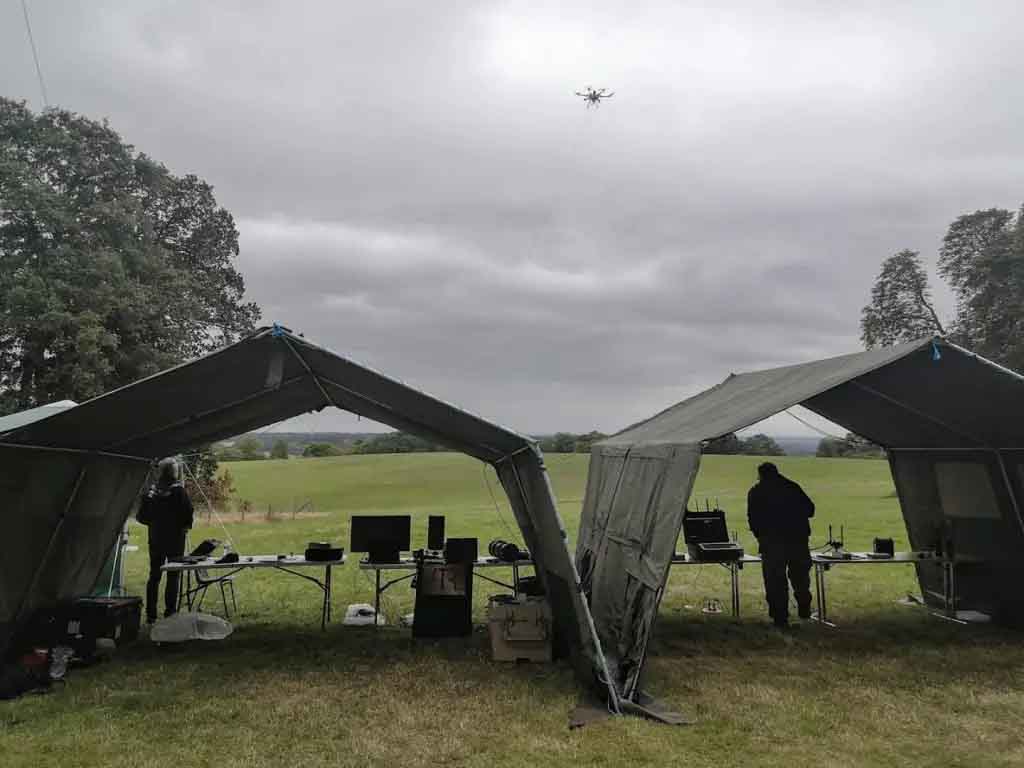
Elistair drone technology: News Market Leading Capabilities?
Khronos DroneBox, and the Orion developed by Elistair are ones of these tools. Based in France, and in the USA, Elistair designs and manufactures smart and automated tethered drone systems. Defense and Security actors use these solutions for perimeter protection, border surveillance, and large event security. Thanks to its micro-tether technology, Elistair has solved the problem of drone battery life.
Khronos DroneBox: Defense Drone for Mobile Units
Khronos is a fully automated system that includes the tethered drone, tethered station, and its ground control station. The entire solution is designed to be integrated into a fixed platform or vehicle to safely enhance static or mobile operations and increase operational flexibility.
Khronos defense drone has been designed to meet the needs of aerial surveillance in hostile environments.
Able to fly at 60 meters for 24 hours, it has a powerful positioning system and automated flight features.
It can be quickly deployed to collect important information. This keeps operators safe from danger. This enables quick deployment to gather important information while keeping operators safe from danger.
Orion Tethered Drone: Tactical Tethered UAV
Spearhead units in expeditionary operations use it to protect, inform, and assist soldiers in the field. It also connects these units to higher authorities.
Designed to handle 50 hours continuous flight, the Orion meets the needs of endurent operations. Data and command and control of the aircraft are secured physically through the tether to the ground control station. The automated flight control software takes over many normal tasks of flying and monitoring. This gives the operator more mental space and helps reduce fatigue.
The heavy lift version of this system allows it to carry ISR payloads of up to 5kgs, outperforming smaller systems. Finally, its tethered technology ensures a discreet air presence for several hours by day and night. The on-board sensors can provide automatic target tracking, range finding, topographical analysis and facial recognition.
Elevating Infantry Strategy with Robotic Surveillance Solutions
All these automated and robotic tools strengthen the strategy. They give the infantryman an advantage when facing the enemy or getting ready to fight.
The tethered drone is an important tool for today’s soldier. It gives them a valuable surveillance resource. Battery capacity and endurance are currently limited. Therefore, power from the ground and security command and control drove Elistair to develop the Orion.
These world-class defense drones are a new way of contributing to the aeronautical metamorphosis that is taking place at a time when states are wondering whether the 5th generation fighter aircraft will be “unmanned” or “manned”.
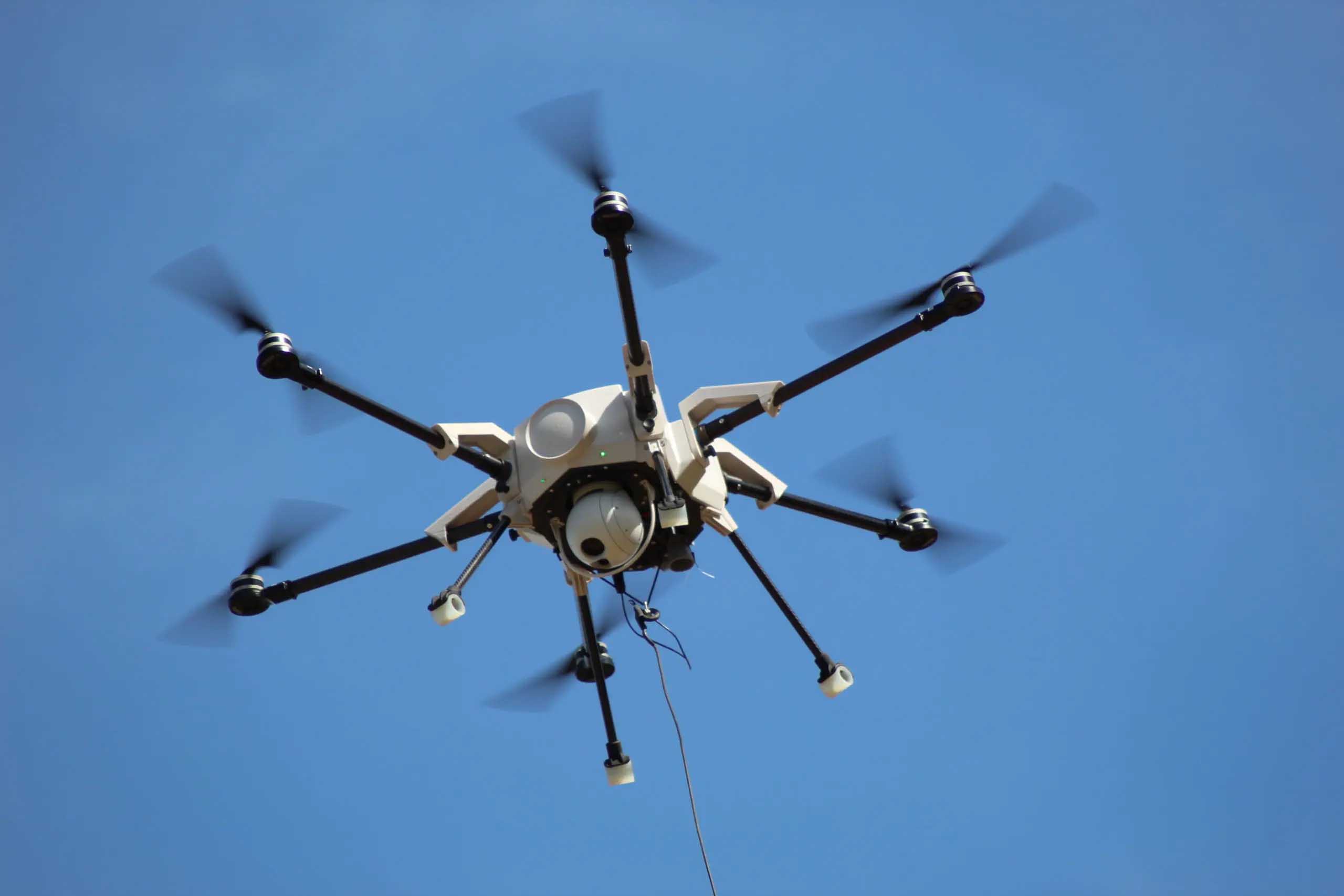
Author – Jean-Charles Kine

